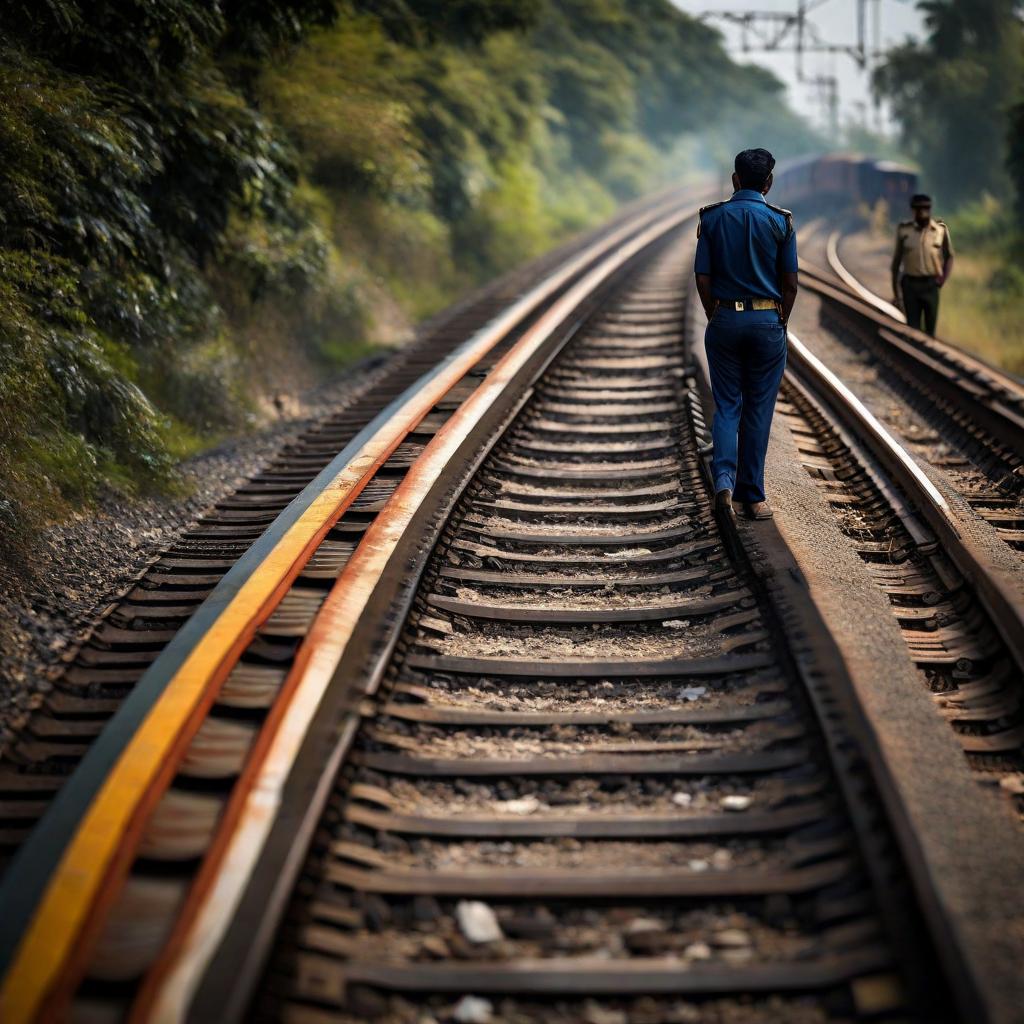Suicide: In a heart-wrenching incident that unfolded at the INA metro station in New Delhi, the life of a 30-year-old man, Ajitish Singh, came to a tragic end as he chose to take his own life by jumping in front of a moving train. This somber event, captured by CCTV cameras, not only disrupted metro services briefly but also cast a spotlight on the broader issue of mental health in society. In this article, we aim to explore the incident, its implications, and the urgent need for a more compassionate and proactive approach towards mental health.
More about suicide:
The Incident:
Two days ago, Ajitish Singh’s desperate act was recorded by surveillance cameras at the metro station. The police, upon receiving information, swiftly arrived at the scene, conducted the necessary procedures, and sent the body for post-mortem examination. The identification of the deceased was facilitated through an i-call made from his mobile phone. As investigations unfold, the motives behind Ajitish Singh’s decision remain unknown, emphasizing the complexity of mental health challenges and the difficulty in pinpointing their root causes.
Impact on Metro Services:

The Delhi Metro Rail Corporation (DMRC) reported a temporary disruption in services lasting approximately 15 to 20 minutes. While such disruptions can inconvenience commuters, it is essential to recognize the broader implications of mental health struggles within our communities. Rather than focusing solely on the momentary inconveniences, we must address the underlying issues that lead individuals to such desperate measures.
Unraveling the Mystery:

The investigation into Ajitish Singh’s suicide highlights the need for a nuanced understanding of mental health issues. Mental health challenges are often intricate, involving various factors that contribute to an individual’s state of mind. Speculation and oversimplification can hinder the identification of root causes, reinforcing stereotypes and inhibiting progress in addressing mental health concerns. As we await the outcome of the investigation, it is crucial to approach the topic with sensitivity and a commitment to fostering understanding.
Avoiding Speculation:

In discussing matters as sensitive as suicide and mental health, it is imperative to refrain from speculation and sensationalism. The circumstances leading to an individual’s decision to end their life are often complex and multifaceted. Drawing premature conclusions without a comprehensive understanding of the underlying factors can perpetuate stigma and impede advancements in mental health awareness and support.
The Need for Compassion:

Ajitish Singh’s tragic story underscores the urgent need for compassion and empathy in our society. Mental health struggles are pervasive, affecting individuals from all walks of life. Instead of stigmatizing those who are suffering, it is crucial to create an environment where people feel comfortable seeking help without fear of judgment. Compassion, at its core, involves understanding and supporting individuals through their struggles, offering a lifeline to those who may be silently grappling with their mental health.
The Silent Struggle:

Mental health challenges often manifest silently, with individuals grappling with their emotions behind a facade of normalcy. The stigma associated with seeking mental health support can be a significant barrier, preventing people from reaching out to friends, family, or professionals. It is crucial to foster an atmosphere that encourages open dialogue and destigmatizes mental health issues. By breaking down these barriers, we can create an environment where individuals feel empowered to seek help and support when needed.
Community Support and Awareness:

Communities play a pivotal role in supporting individuals facing mental health challenges. Fostering awareness and understanding within communities can create an environment that promotes well-being and provides resources for those in need. Initiatives aimed at educating the public about mental health, its signs, and avenues for seeking help can significantly contribute to breaking down the barriers surrounding mental health discussions. By promoting community support, we can create a network that acknowledges and addresses mental health challenges collectively.
Government and Institutional Responsibility:

Governments and institutions also bear a responsibility for addressing mental health concerns. Allocating resources to mental health programs, ensuring accessibility to mental health services, and promoting research are crucial steps in building a society that prioritizes mental well-being. By integrating mental health into public policies and institutional frameworks, we can work towards creating an environment that supports individuals at both societal and systemic levels.
Conclusion:
The tragic suicide of Ajitish Singh serves as a stark reminder of the importance of addressing mental health issues with empathy and understanding. Instead of sensationalizing such events, let us use them as catalysts for fostering a society that values mental health, promotes open dialogue, and provides support to those in need. By cultivating compassion and awareness, we can work towards creating a world where mental health is prioritized and individuals feel empowered to seek help without fear of judgment. In doing so, we contribute to a society that understands the ripple effect of mental health and actively works towards creating a more supportive and compassionate future.



Your blog has quickly become one of my favorites. Your writing is both insightful and thought-provoking, and I always come away from your posts feeling inspired. Keep up the phenomenal work!
Temp Mail Pretty! This has been a really wonderful post. Many thanks for providing these details.
Somebody essentially lend a hand to make significantly articles Id state That is the very first time I frequented your website page and up to now I surprised with the research you made to make this actual submit amazing Wonderful task
you are in reality a good webmaster The website loading velocity is amazing It sort of feels that youre doing any distinctive trick Also The contents are masterwork you have done a fantastic job in this topic
Hi i think that i saw you visited my web site thus i came to Return the favore I am attempting to find things to improve my web siteI suppose its ok to use some of your ideas
Attractive section of content I just stumbled upon your blog and in accession capital to assert that I get actually enjoyed account your blog posts Anyway I will be subscribing to your augment and even I achievement you access consistently fast